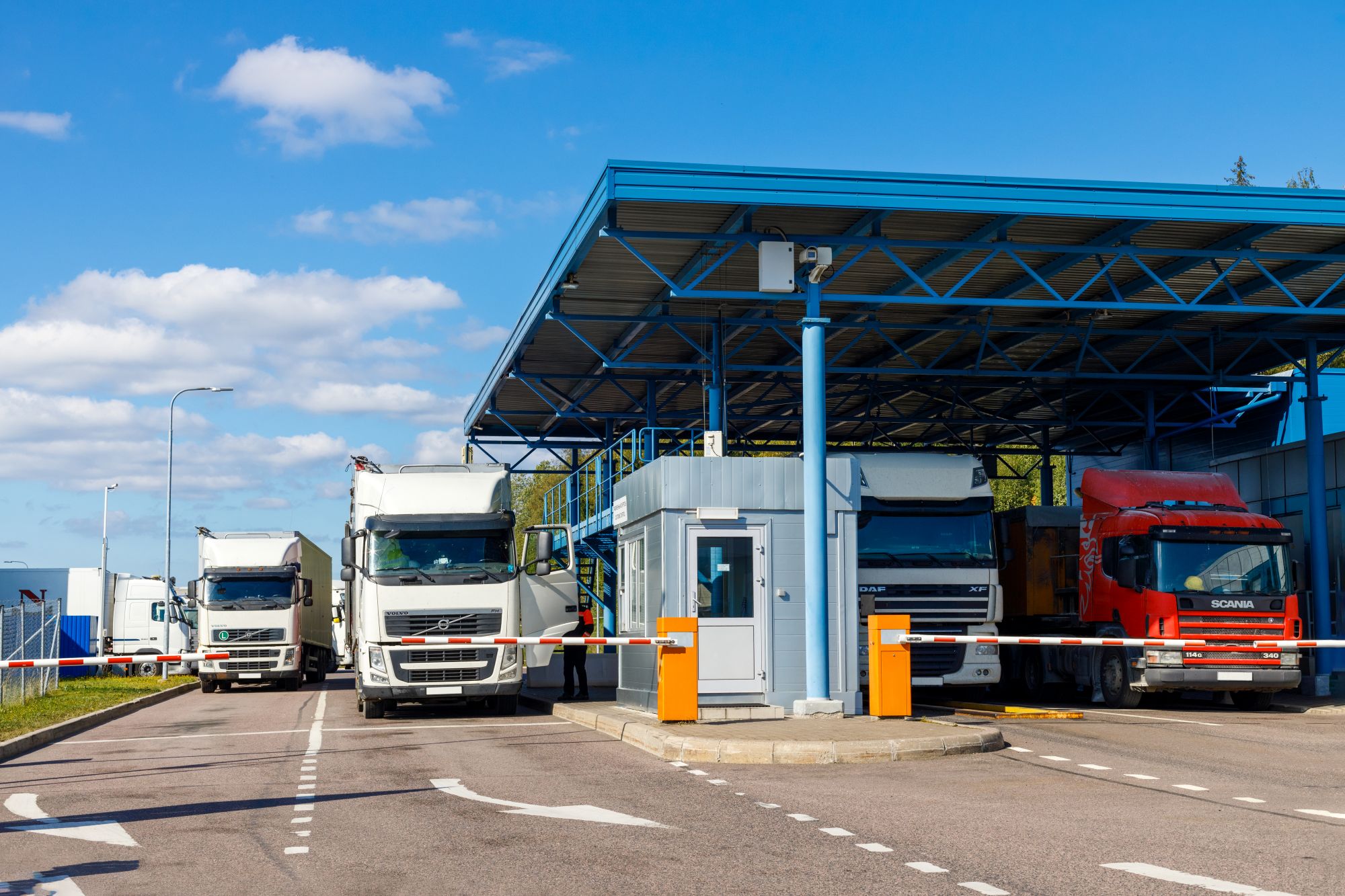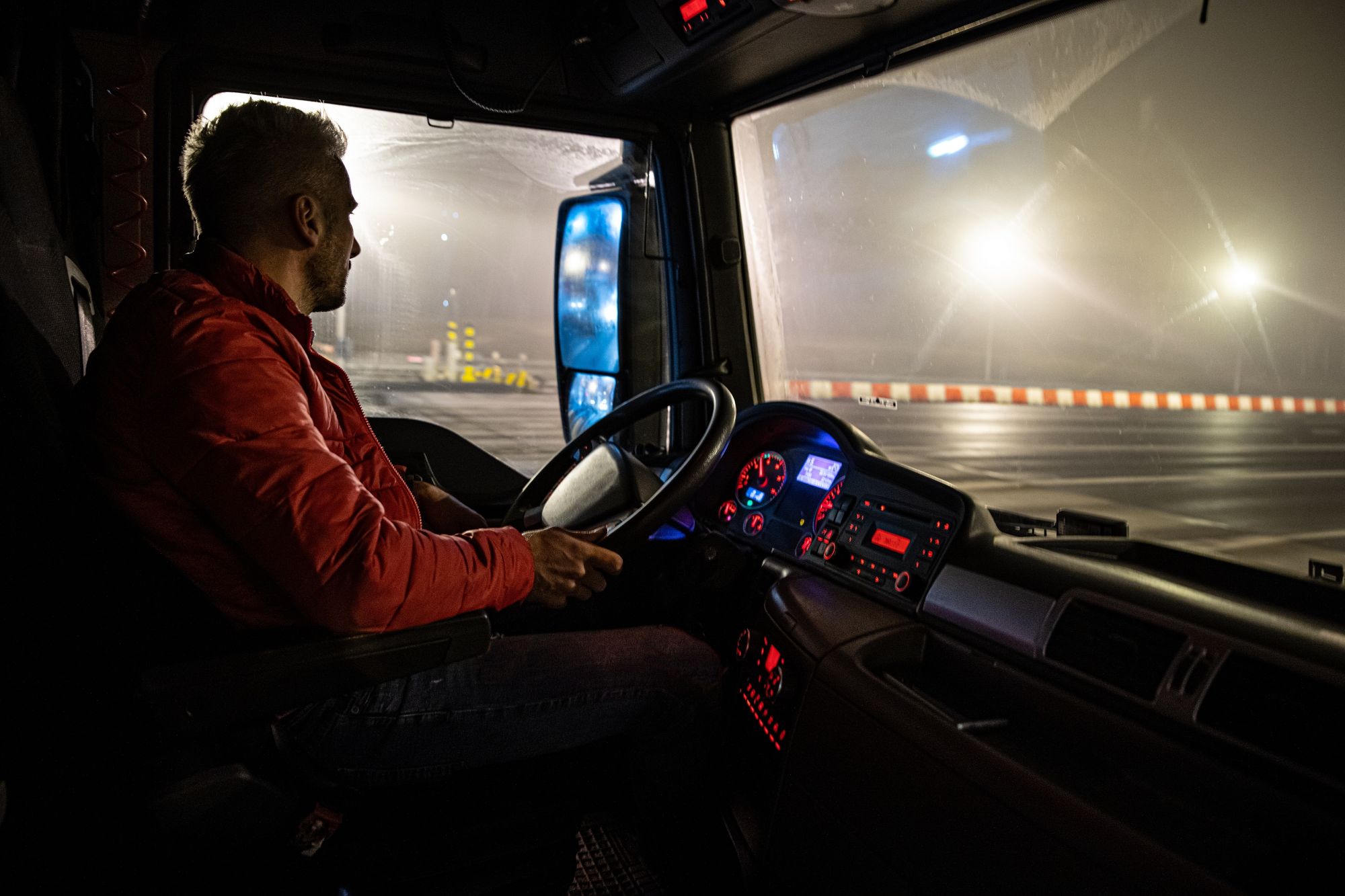
Guest
Den polsk-ukrainske grænse genåbner: Hvad flådeoperatører skal vide
Oprettet: 18.06.2025
•
Opdateret: 20.06.2025
Efter måneder med afbrydelser kører godstrafikken mellem Polen og Ukraine igen frit. Men med spændinger, der stadig ulmer, og truslen om nye blokader i alles bevidsthed, skal flådeoperatører være opmærksomme på risiciene - og forberedt på at beskytte chaufførernes velfærd på begge sider af grænsen.
Denne artikel forklarer, hvad der forårsagede forstyrrelsen, hvordan den påvirkede chaufførerne, og hvilke skridt du kan tage for at mindske indvirkningen, hvis arbejdskonflikten vender tilbage.
Hvad forårsagede grænseblokaden mellem Polen og Ukraine i 2024?
Situationen begyndte i slutningen af 2023, da polske lastbilchauffører begyndte at protestere ved de store grænseovergange. De hævdede, at EU's beslutning om at ophæve kravene til tilladelser for ukrainske vognmænd - indført som en midlertidig krigsforanstaltning - førte til en tilstrømning af lavprisoperatører, der underbød polske firmaer.
Protesterne eskalerede, blokerede vigtige fragtruter ind i Ukraine og fangede tusindvis af køretøjer i kilometerlange køer. Da blokaden var på sit højeste, var mere end 5.000 lastbiler strandet ved grænsen, og nogle ventede i mere end en uge på at komme over. Ikke-ukrainske EU-chauffører led også under lange forsinkelser, anstrengte tidsplaner og dårlige forhold.
Det, der begyndte som en logistisk tvist, udviklede sig til en bredere protest fra polske lastbilchauffører over ukrainsk import, markedsadgang og virkningen af EU's nødforanstaltninger på transportområdet. Polske landmænd sluttede sig snart til, frustrerede over effekten af ukrainske landbrugsprodukter på de indenlandske priser.
Polske chauffører kritiserede også Ukraines elektroniske køsystem (https://www.pravda.com.ua/eng/news/2023/11/29/7430863/) til grænseovergange - kendt som eCherha - og hævdede, at det stillede EU-transportører dårligere. Mens systemet var designet til at strømline godstransporten ved at give transportørerne mulighed for at forhåndsreservere tider ved grænseovergangene, hævdede polske operatører, at det gav ukrainske firmaer større fleksibilitet og hurtigere adgang. Problemer som sprogbarrierer, begrænset integration med EU's logistiksystemer og inkonsekvent implementering betød, at mange EU-chauffører måtte vente længere ved grænsen, hvilket gav yderligere næring til opfattelsen af uretfærdig behandling og bidrog til den bredere uro.
Tidslinje for grænseblokaderne mellem Polen og Ukraine
November 2023: Protester begynder ved Dorohusk, Hrebenne og Korczowa-overgangene.
December 2023: Flere overgange blokeres, herunder Medyka; tre ukrainske chauffører dør, mens de venter i køen.
Januar 2024: Den polske regering indgår en aftale om at sætte blokaden på pause indtil marts.
Marts-april 2024: Sporadiske blokader genoptages ved mindre overgange.
Maj 2025: En ny fire måneders blokade begyndte ved Yahodyn-Dorohusk, men blev underkendt i retten.
Juni 2025: Alle større grænseovergange er fortsat åbne, men der er stadig risiko for fremtidige forstyrrelser.
Hvad gør den polske regering for at forbedre situationen?
Som reaktion på afbrydelsen og dens bredere konsekvenser har den polske regering indtaget en proaktiv holdning. Grænseovergangene til Ukraine er blevet udpeget som kritisk infrastruktur, hvilket giver dem større beskyttelse mod fremtidige blokader og hjælper med at sikre den fortsatte strøm af gods, humanitær hjælp og militær støtte.
Et nyt råd for samarbejde med Ukraine er også blevet oprettet for generelt at styrke båndene mellem de to lande. En del af dets ansvarsområde er at forbedre koordineringen på tværs af handel og transport. Parallelt hermed investerer Polen i infrastrukturen ved den østlige grænse og samarbejder med EU-embedsmænd for at presse på for mere rimelige vilkår for polske vognmænd. Selv om disse tiltag måske ikke løser situationen fra den ene dag til den anden, signalerer de en mere langsigtet forpligtelse til stabilitet og struktureret dialog.

Konsekvenserne for chaufførerne
Blokaden skabte uacceptable forhold for de professionelle chauffører. Mange tilbragte dage eller uger i deres førerhuse uden adgang til toiletter, mad eller rindende vand. Nogle sad fast i frostgrader uden varme eller husly.
[Tre ukrainske chauffører døde] (https://www.reuters.com/world/europe/third-ukrainian-truck-driver-dies-poland-border-blockades-tv-2023-12-16/) i løbet af blokadeperioden, og udmattelse og ubehandlede sygdomme menes at være medvirkende faktorer.
Afbrydelsen forårsagede også en betydelig mental og følelsesmæssig belastning, især for ukrainske chauffører, der forsøgte at nå frem til eller vende tilbage fra deres hjem i krigstid. Forsinkelserne påvirkede ikke kun handelen, men også transporten af brændstof, nødhjælp og militære varer, som er afgørende for Ukraines nationale forsvar.
Mens polske demonstranter insisterede på, at humanitære og militære hjælpekøretøjer fik lov til at passere grænsen, viser rapporter fra ukrainske myndigheder, at det ikke altid var tilfældet.
Disse forhold var ikke kun traumatiske for chaufførerne - de afslørede også huller i flådens risikostyring og beredskabsplanlægning. Operatører skal nu behandle grænseforstyrrelser som en løbende trussel.
Hvad flådeoperatører skal vide
Selvom situationen har stabiliseret sig, er de underliggende spændinger mellem polske vognmænd, ukrainske operatører og EU's politik fortsat uløste. Flådechefer, der arbejder i eller i nærheden af regionen, bør være opmærksomme på muligheden for yderligere arbejdskonflikter - især i forbindelse med sæsonbestemte pressekonjunkturer eller revisioner af EU's politik.
Her er SNAP-teamets anbefalinger til at håndtere situationen effektivt:
1. Overvåg situationen ved den polsk-ukrainske grænse
Hold dig opdateret med nyheder fra polske og ukrainske logistiksammenslutninger og regeringskilder. Abonner på advarsler om grænsetrafik, og følg pålidelige logistikpartnere for at få opdateringer i realtid.
2. Planlæg fleksible ruter
Hav beredskabsplaner, der omdirigerer køretøjer gennem Ungarn, Slovakiet eller Rumænien, hvis overgangene mellem Polen og Ukraine bliver blokeret igen.
3. Støt chaufførernes velfærd
Sørg for, at dine lastbiler er fyldt op med det mest nødvendige: mad, vand, powerbanks og medicinkit.
I perioder med uro er adgang til sikker lastbilparkering i Polen afgørende, så dine chauffører er sikre, udhvilede og væk fra vejkanten. Udstyr chaufførerne med opdaterede oplysninger om sikker lastbilparkering og rastepladser langs deres rute.
Vores [intruck app] (https://intruckapp.com/) har et interaktivt kort over lastbilparkering med 11.000 udbydere af HGV-tjenester i hele Europa, herunder Polen, Ungarn og Slovakiet. Det er et brugervenligt værktøj til at finde sikre rastepladser til lastbiler i Polen, hvilket gør den særligt værdifuld i perioder med arbejdskonflikter.
Selvom appen i øjeblikket ikke tilbyder lastbilparkering i Ukraine, kan ukrainske operatører og chauffører bruge intruck til at finde pålidelige rastepladser i EU under langdistancerejser eller i perioder med afbrydelser.
4. Book sikre parkeringsløsninger til lastbiler i Polen
Med øget efterspørgsel i perioder med forstyrrelser er forudgående booking afgørende. Chauffører kan også bruge intruck til at finde og booke pålidelig lastbilparkering i Polen på forhånd. Uanset om dine køretøjer rejser dybt ind i Østeuropa eller vender tilbage mod vest, giver det dine chauffører adgang til parkering for lastbiler i nærheden af Warszawa og andre højtrafikerede områder.
5. Kommuniker regelmæssigt med chaufførerne
Fastlæg tidsplaner for check-in, især hvis der forventes lange ventetider eller omkørsler. Forsikr chaufførerne om, at deres velbefindende er en prioritet, og støt dem, hvis de oplever uventede forsinkelser. Hvis det er muligt, så foreslå sikre parkeringspladser for lastbiler i Ukraine på forhånd, så de ved, hvor de kan tage en pause.
Vi ser fremad
Genåbningen af grænsen mellem Polen og Ukraine er en god nyhed for flåder, der opererer i Østeuropa. Men med uafklarede politiske spændinger er det vigtigt at være forberedt.
"Situationen ændrer sig hurtigt," siger Nick Renton, chef for europæisk strategi og forretningsudvikling hos SNAP. "Med muligheden for yderligere forstyrrelser ved grænsen mellem Polen og Ukraine anbefaler vi, at flådeoperatører lægger robuste planer for at prioritere chaufførernes velbefindende og minimere driftsrisici. Det omfatter at indbygge fleksibilitet i leveringsplanerne, sørge for vigtige forsyninger i køretøjerne og sikre, at chaufførerne har adgang til sikker lastbilparkering.
"Vores netværk af bookbare rastepladser i Europa og Polen giver dig værktøjerne til at forblive fleksibel - og giver ro i sindet til både operatører og chauffører, når forholdene på jorden bliver uforudsigelige."
Se vores interaktive kort over [sikker lastbilparkering i Polen i dag] (https://snapacc.com/map/poland).



